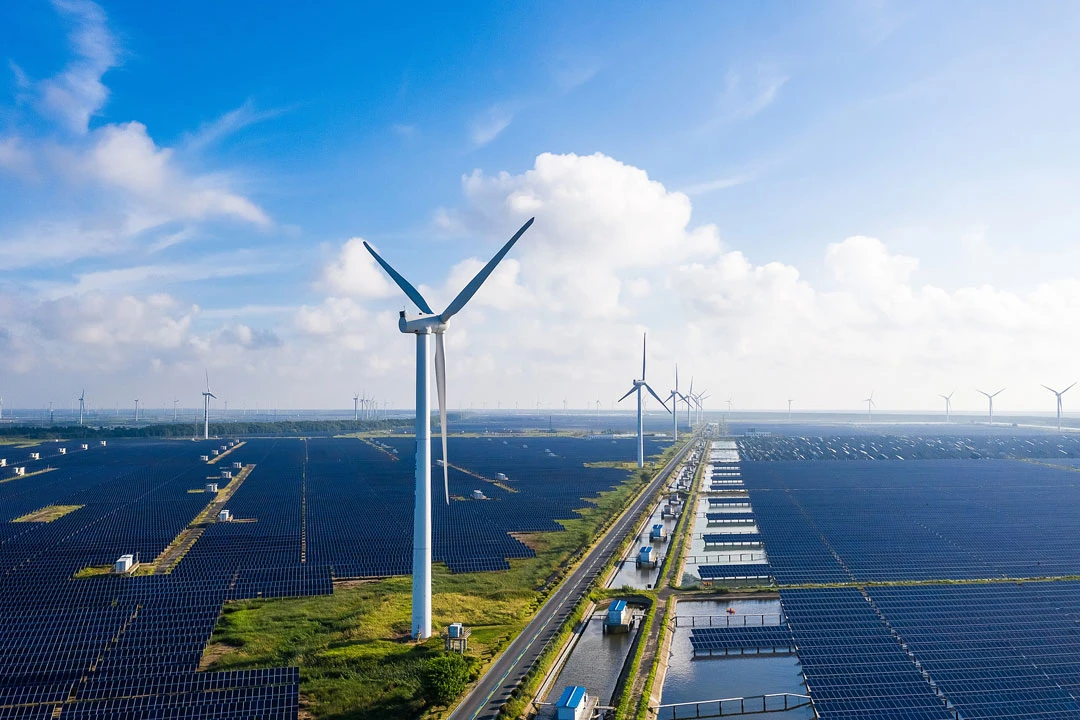From Coastal City to Clean Energy Pioneer: Yangjiang's (阳江) Transformative Journey
In the ever-evolving landscape of global energy, a quiet revolution is taking place on China's southern coast. Yangjiang, a city once known primarily for its proximity to the Pearl River Delta, has emerged as an unexpected frontrunner in the nation's push towards a greener future. This transformation is not just about replacing fossil fuels with renewable alternatives; it's a comprehensive reimagining of how energy is produced, distributed, and consumed in the 21st century.
As the world grapples with the urgent need to address climate change, Yangjiang has positioned itself at the vanguard of China's energy transition. With a bold vision and strategic planning, the city has leveraged its natural resources to become a powerhouse of clean energy production. Today, Yangjiang boasts an impressive array of energy sources, from nuclear and hydroelectric to solar and wind power, with a particular emphasis on offshore wind farms that harness the mighty gusts sweeping in from the South China Sea.
The numbers tell a compelling story of progress. Yangjiang has become the first city in Guangdong province to exceed 20 million kilowatts in total installed power capacity. More impressively, clean energy sources account for over 73% of this capacity, with offshore wind farms alone contributing 5 million kilowatts – the highest in Southern China. This achievement is not just a local success story; it represents a significant step forward in China's broader ambitions to peak carbon emissions before 2030 and achieve carbon neutrality by 2060.
But Yangjiang's energy revolution goes beyond mere statistics. The city has embraced the concept of a "new power system" – an integrated approach that combines diverse energy sources with cutting-edge technology to create a more resilient and efficient grid. This system is designed to address one of the key challenges of renewable energy: intermittency. By pairing wind power with pumped storage hydroelectricity and innovative energy storage solutions, Yangjiang is creating a model for stable, clean energy provision that could be replicated across China and beyond.
Harnessing Nature's Power: The Rise of China's Offshore Wind Capital
Innovation is at the heart of Yangjiang's success. The city has become a testing ground for new technologies that promise to revolutionize energy transmission and distribution. From flexible DC transmission systems for offshore wind farms to advanced grid management techniques, Yangjiang is pushing the boundaries of what's possible in modern energy infrastructure.
This technological prowess is not developing in isolation. Yangjiang is fostering a robust green energy industrial chain, with a particular focus on offshore wind equipment manufacturing. The city's strategic location and growing expertise have attracted investment and talent, creating a virtuous cycle of innovation and economic growth. Each year, the local offshore wind power industry base is supplied with over 3 billion kilowatt-hours of green electricity, showcasing the symbiosis between energy production and industrial development.
Innovation and Integration: Building the Power Grid of Tomorrow
The implications of Yangjiang's transformation extend far beyond its city limits. As a gateway between the Pearl River Delta and the Beibu Gulf, the city serves as a model for regional cooperation in energy development. Its success demonstrates how coastal cities can leverage their natural advantages to drive sustainable development, potentially influencing energy policies and practices across China and Southeast Asia.
However, Yangjiang's journey is not without challenges. Integrating large amounts of variable renewable energy into the grid requires constant innovation and careful management. The city must also navigate the complex interplay between energy development, environmental protection, and community needs. Balancing these factors will be crucial as Yangjiang continues to expand its clean energy capacity.
Looking to the future, Yangjiang's ambitions show no signs of waning. The city aims to increase its total installed power capacity to over 40 million kilowatts by 2030, with new energy sources accounting for an impressive 81.3% of the total. This goal aligns with China's national strategy of building a "new type of power system" centered on new energy sources, positioning Yangjiang as a key player in the country's energy transition.
The story of Yangjiang is more than just a tale of one city's transformation. It is a microcosm of China's broader efforts to redefine its relationship with energy and the environment. By embracing innovation, leveraging natural resources, and fostering industrial synergies, Yangjiang is charting a course towards a more sustainable future – not just for itself, but for the nation and the world.
As we stand on the brink of a new era in energy production and consumption, cities like Yangjiang offer valuable lessons and inspiration. They remind us that with vision, commitment, and innovative thinking, even the most ambitious goals for clean energy and sustainable development are within reach. The winds of change are blowing strong in Yangjiang, carrying with them the promise of a cleaner, greener future for generations to come.


